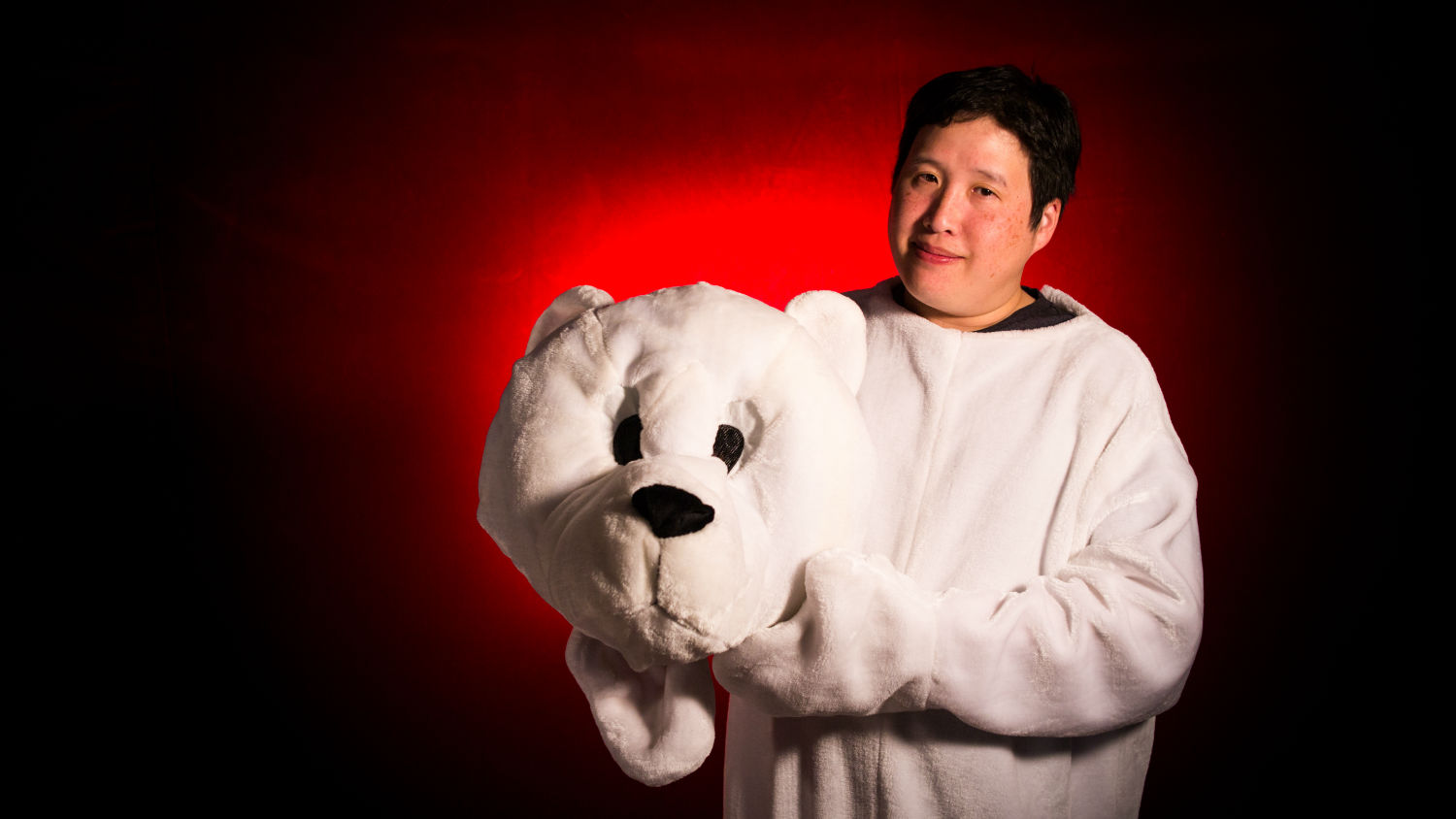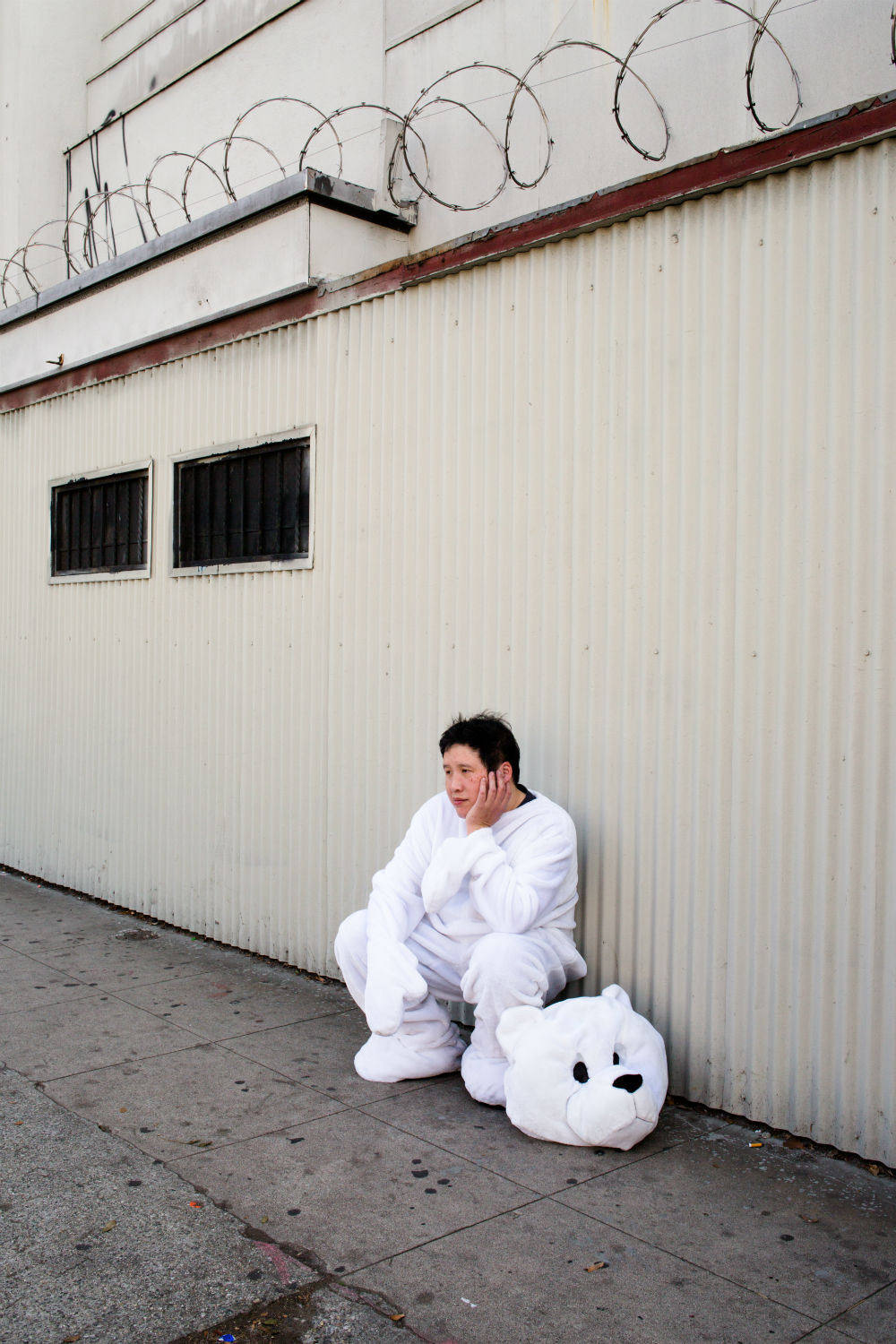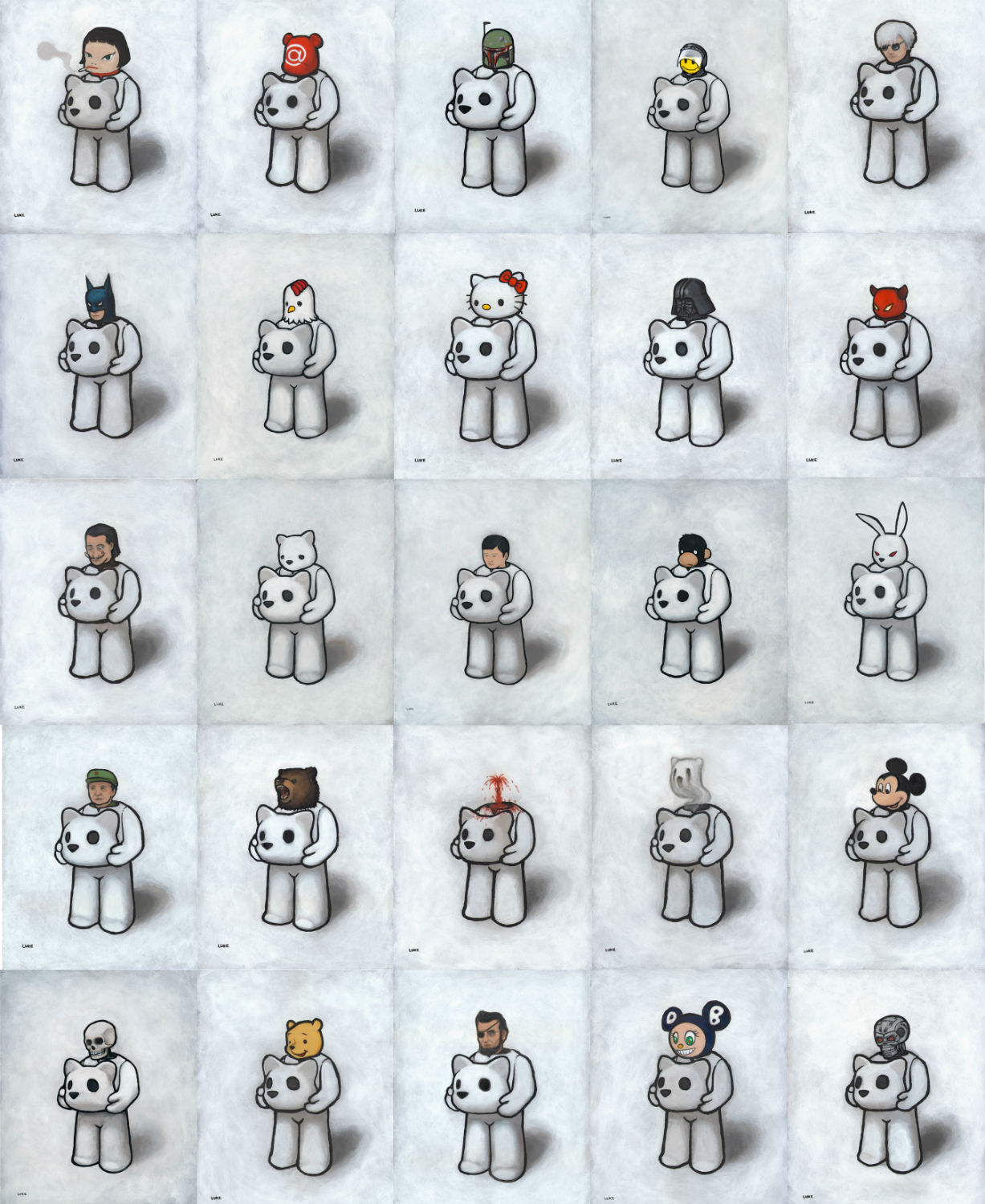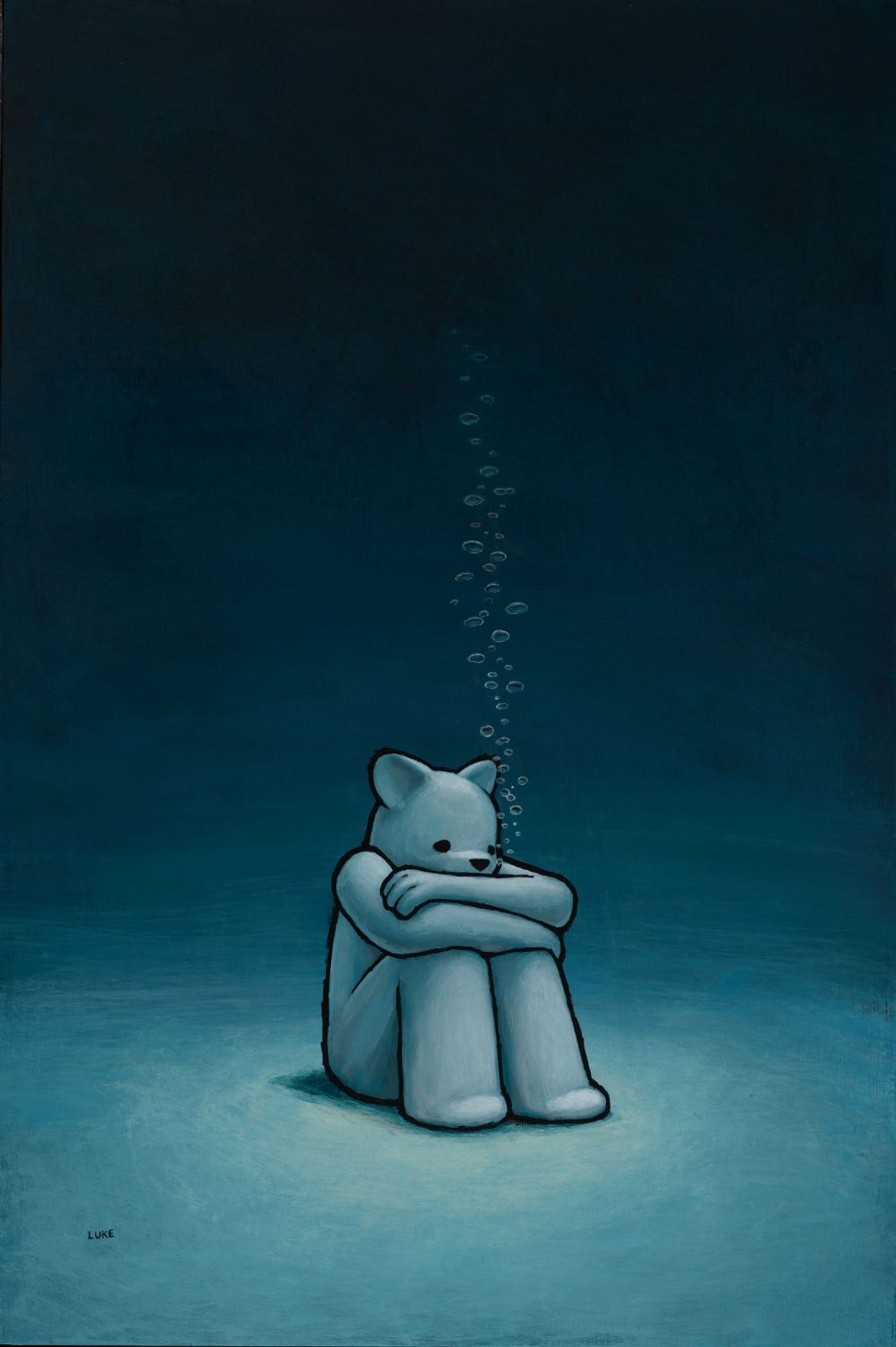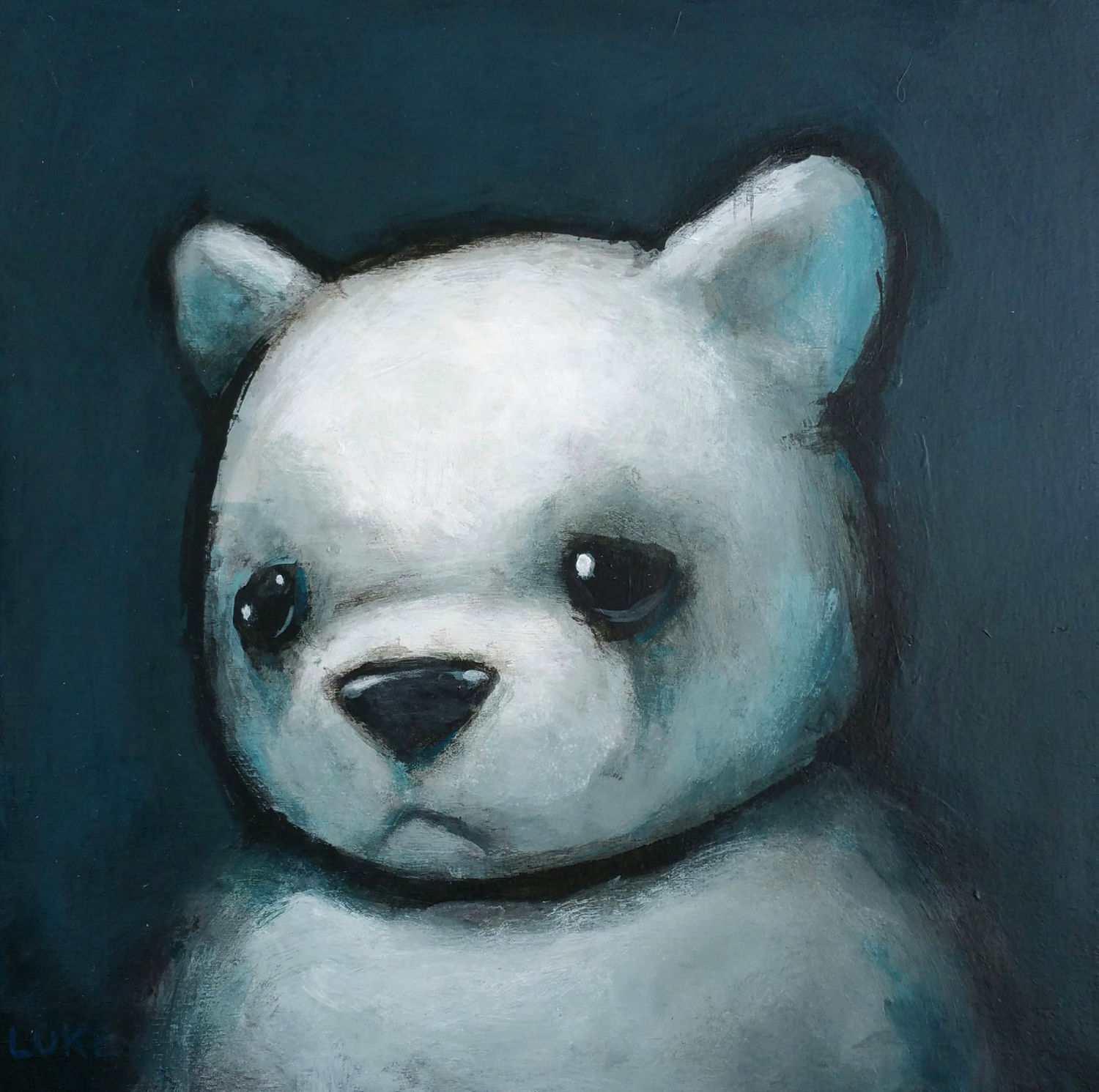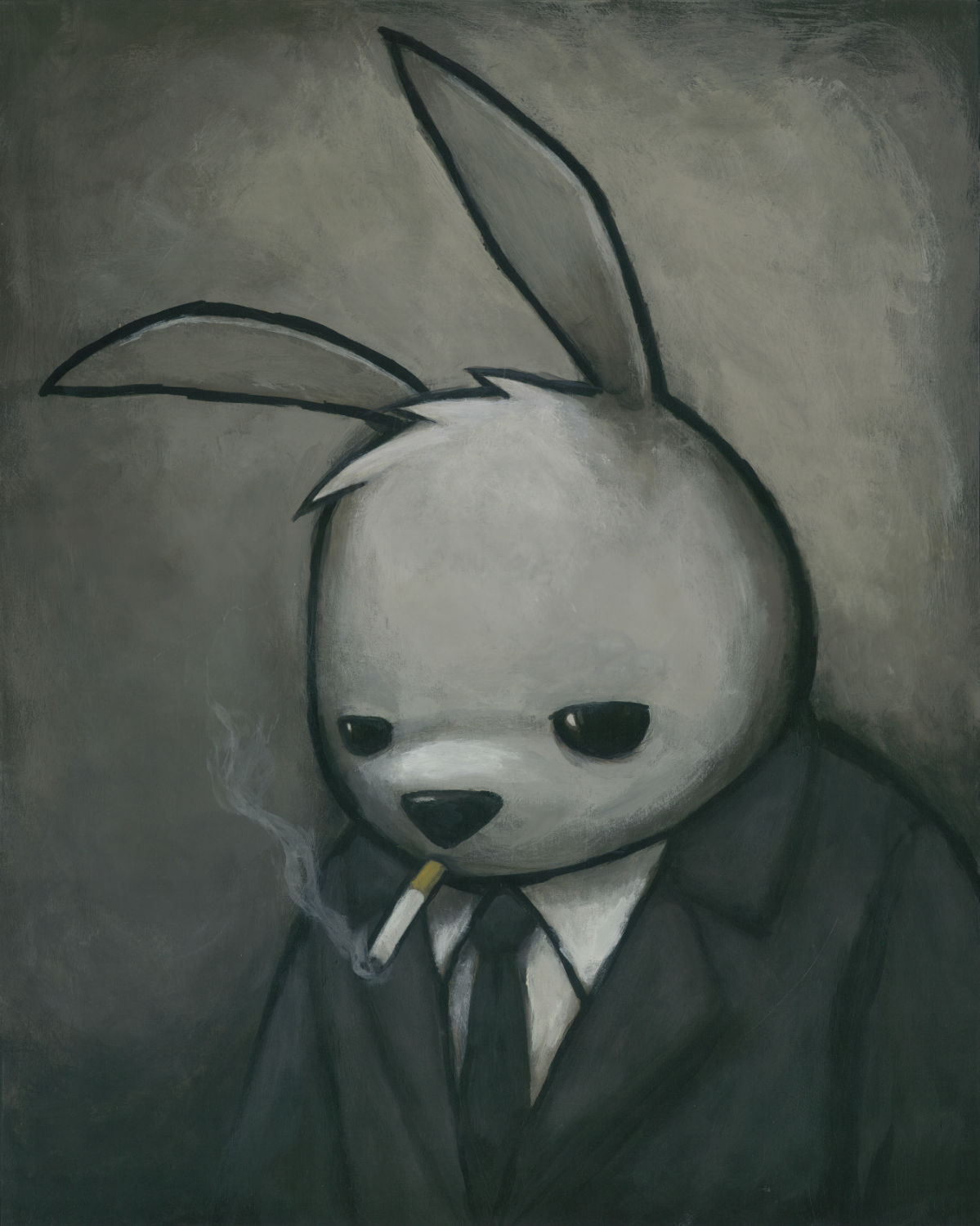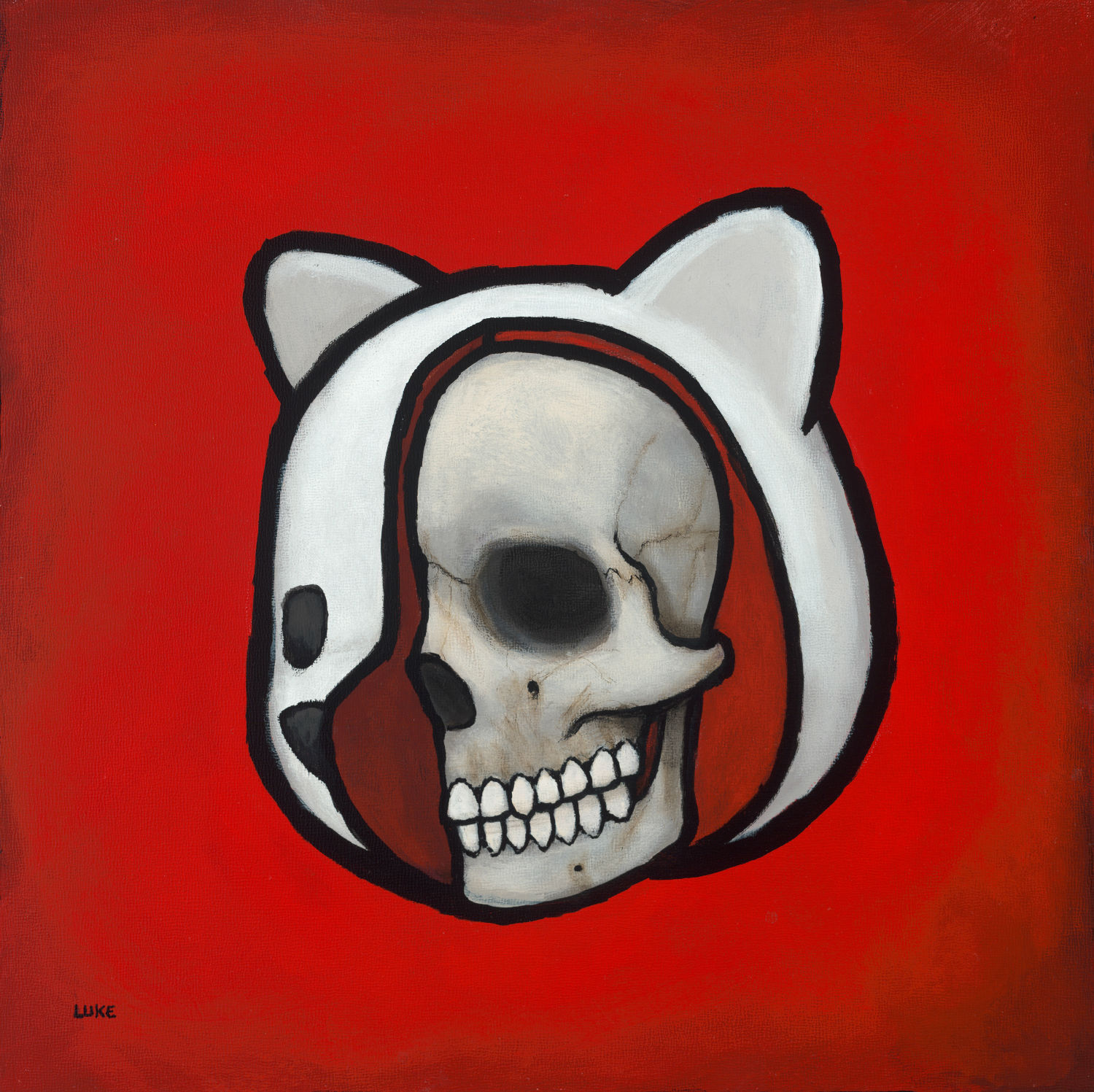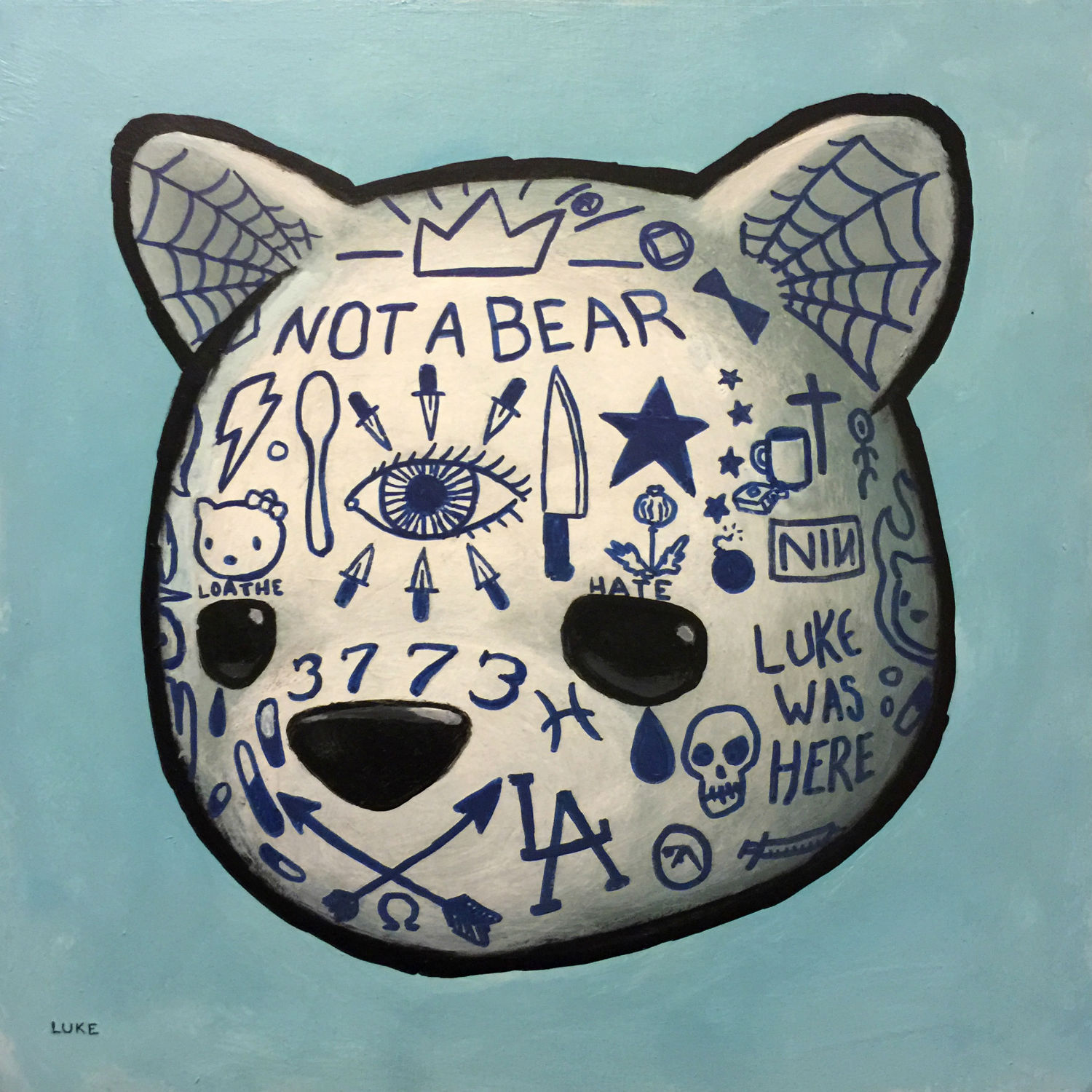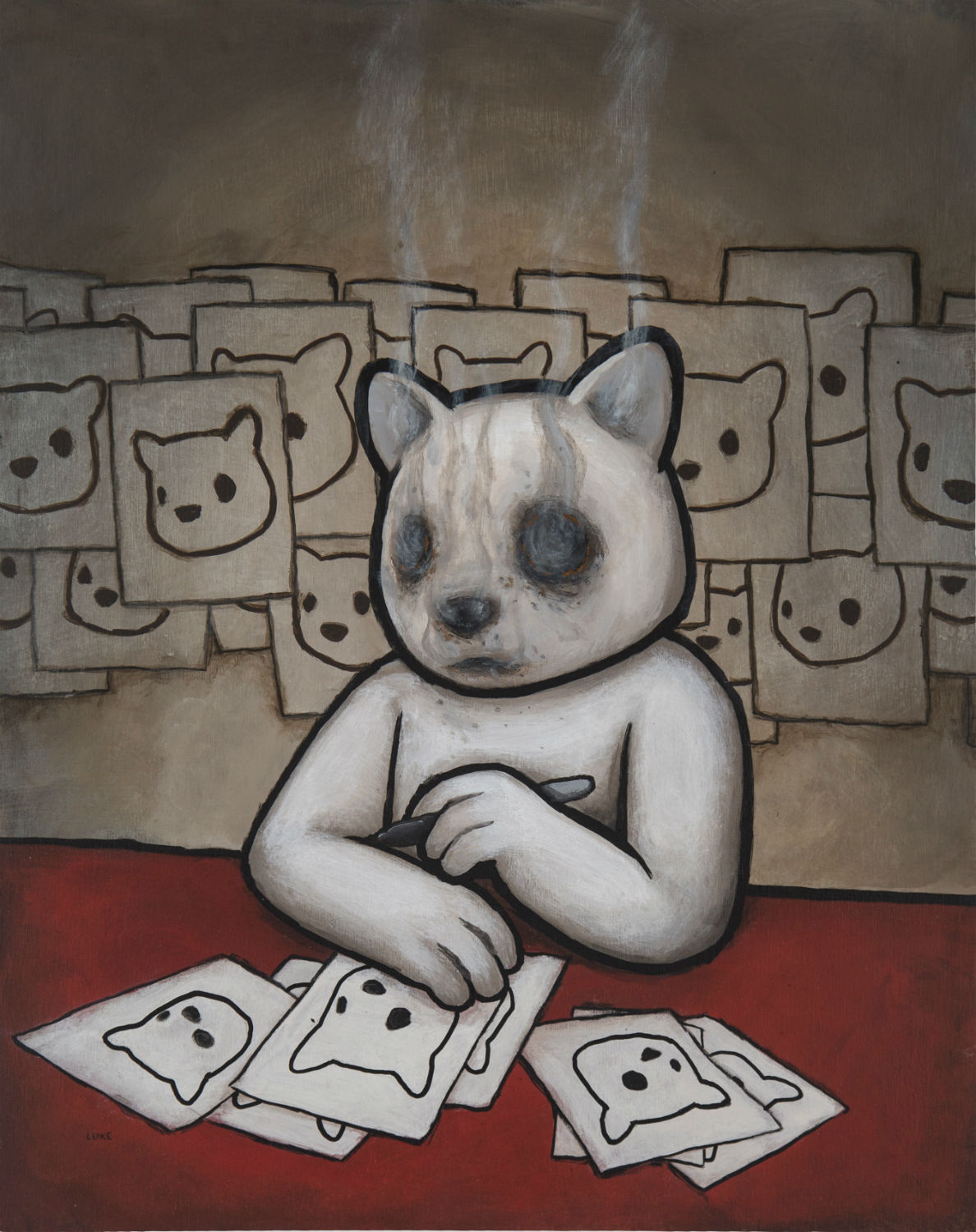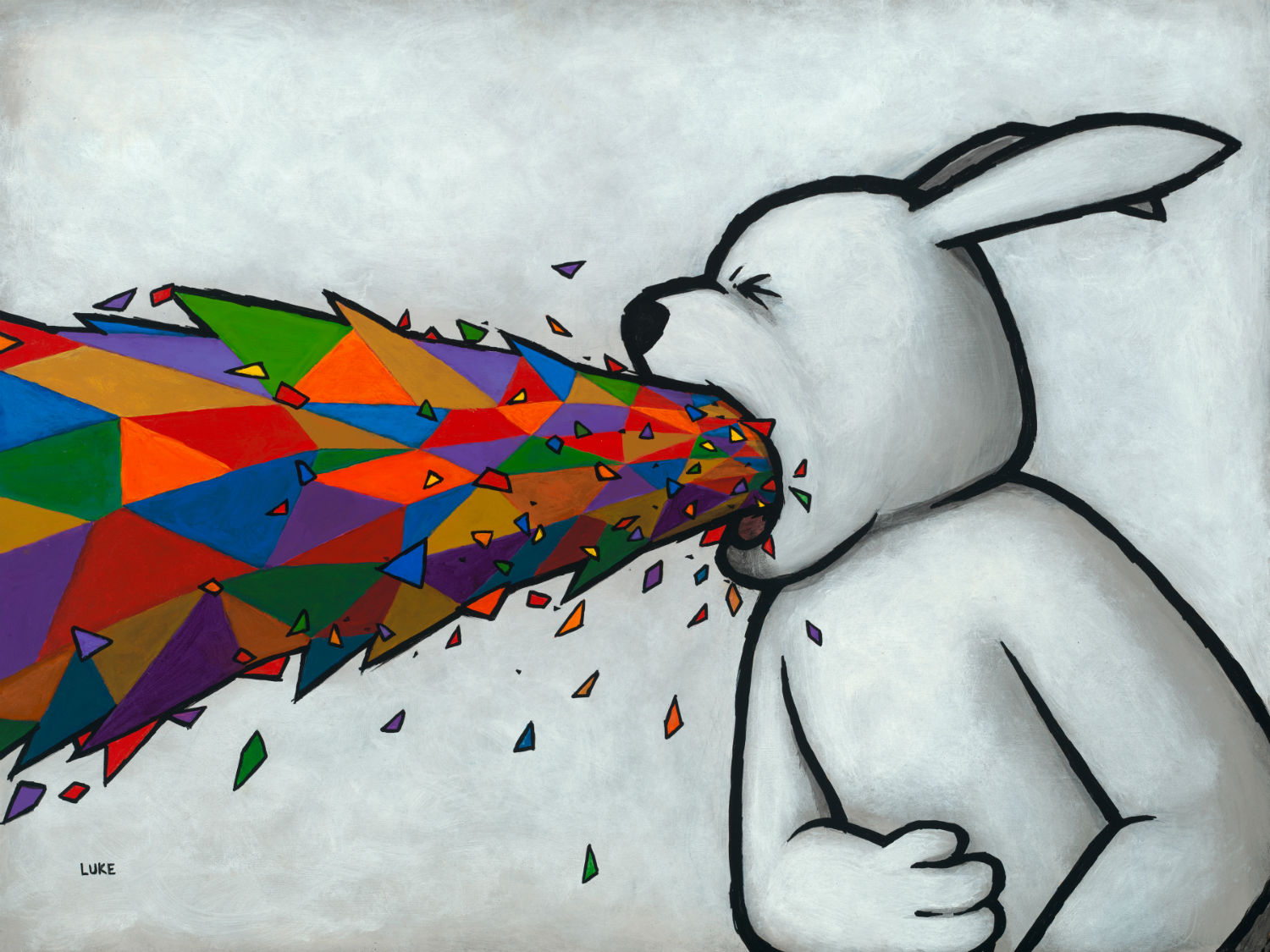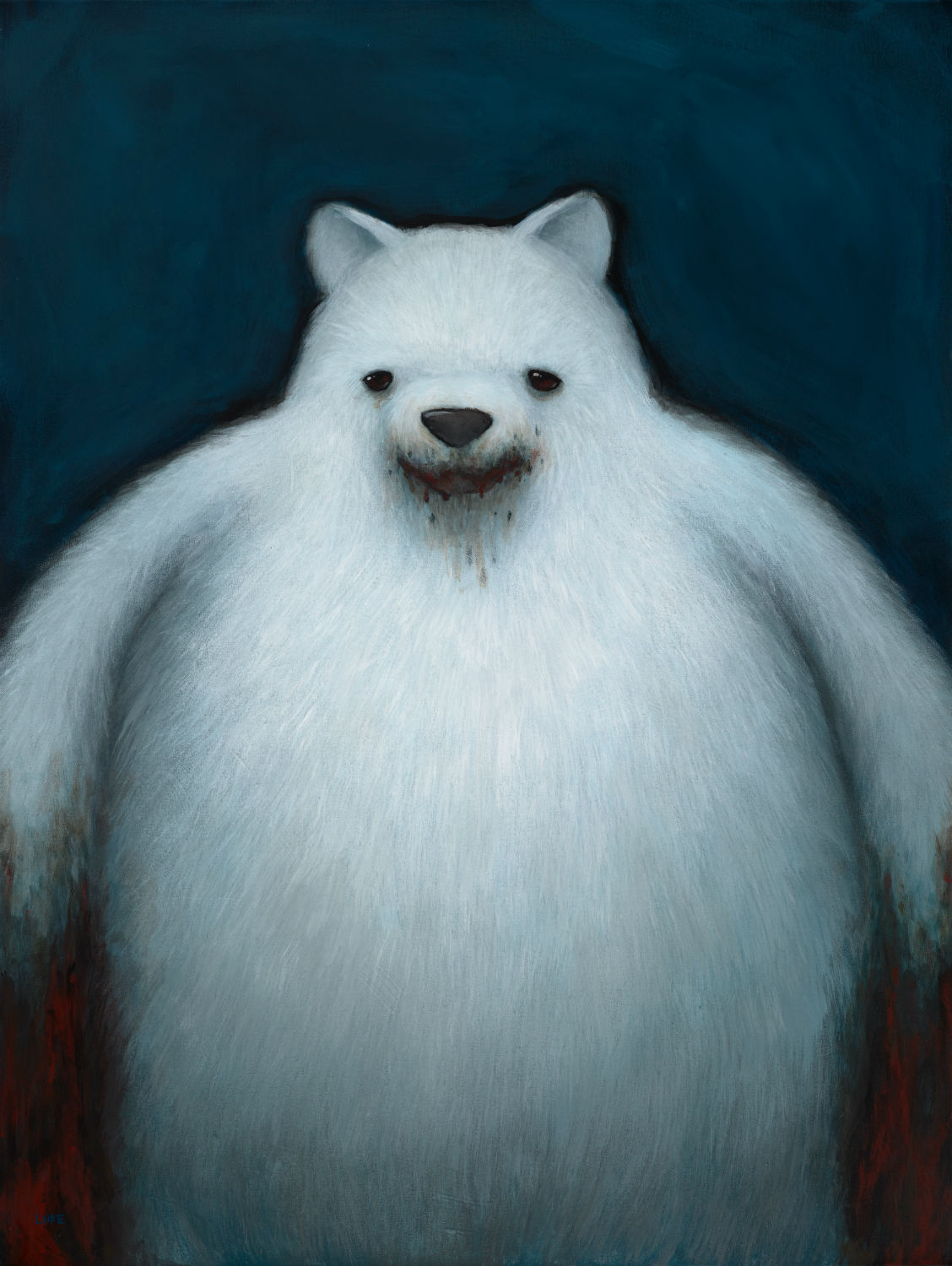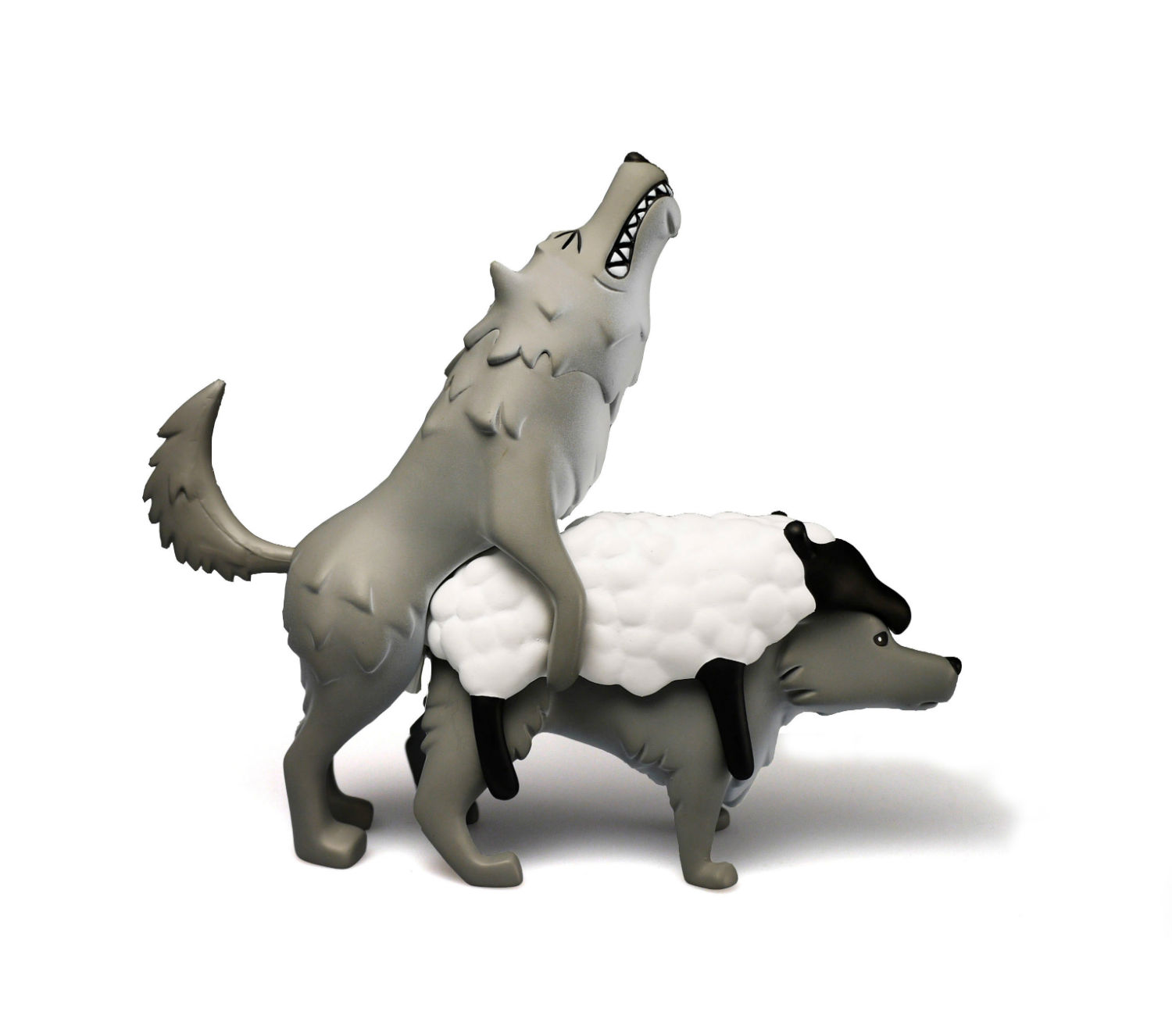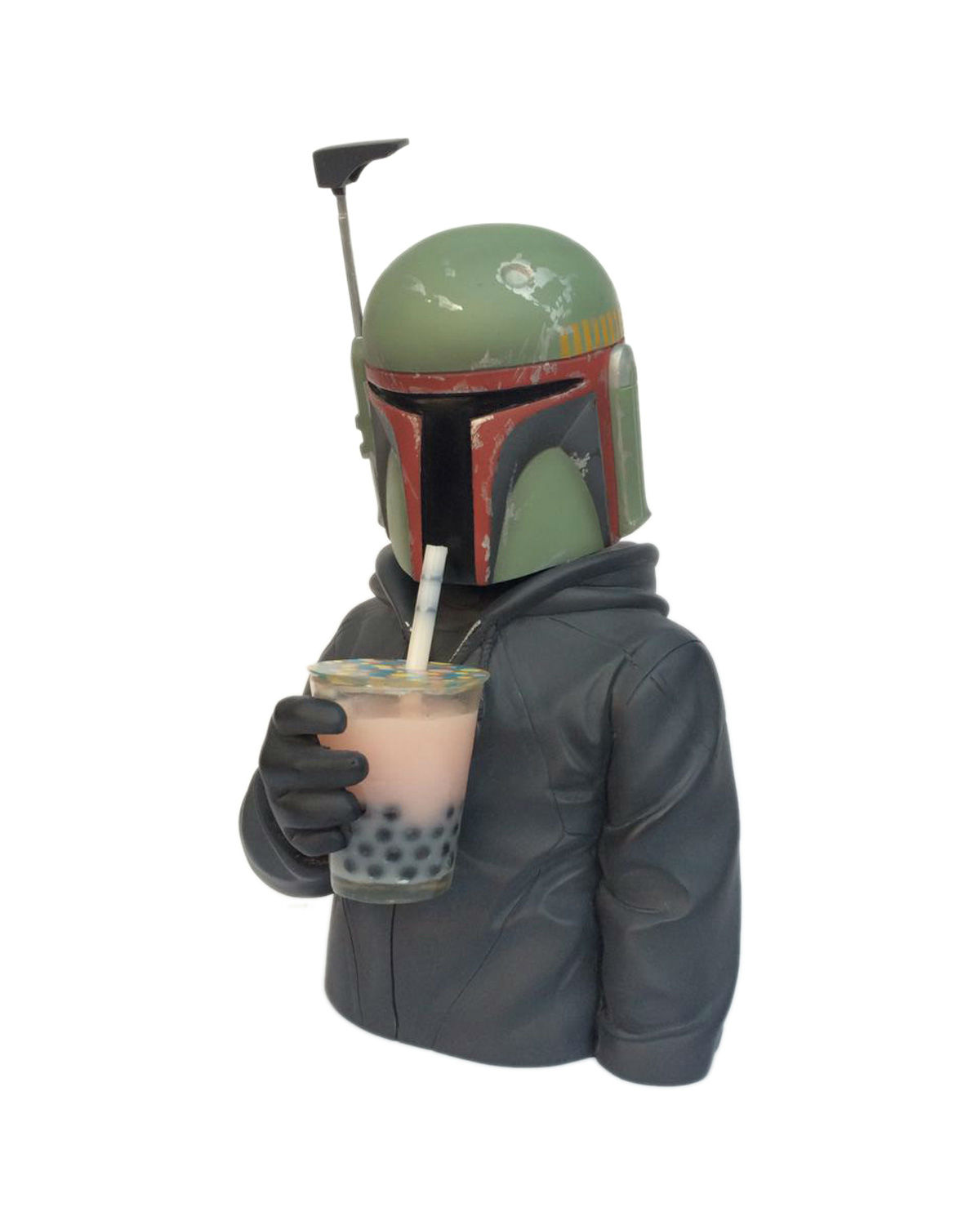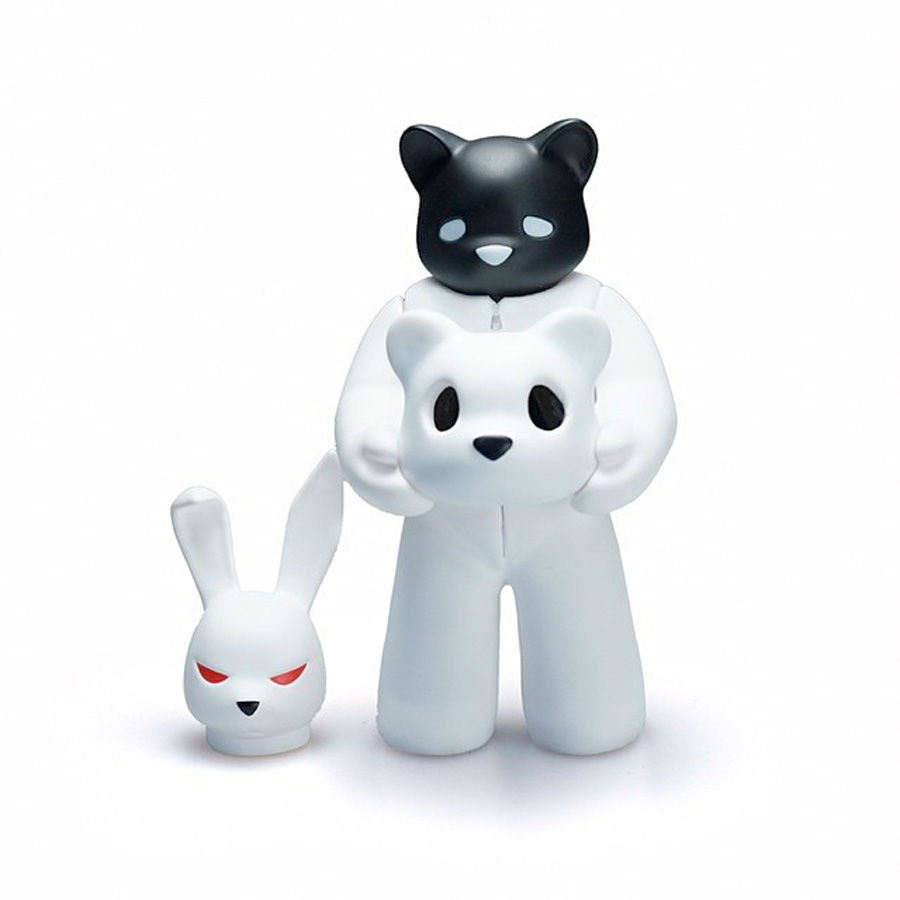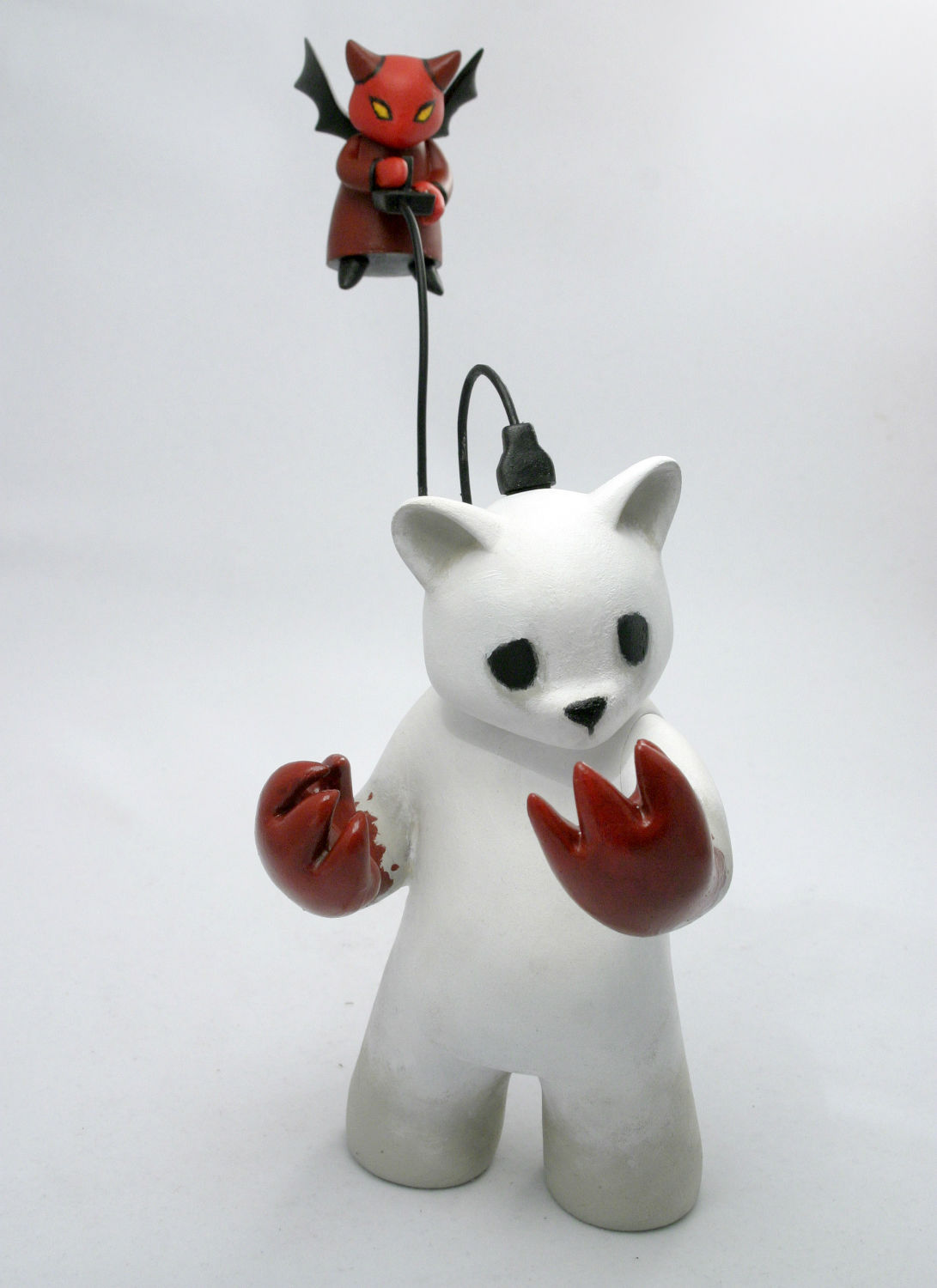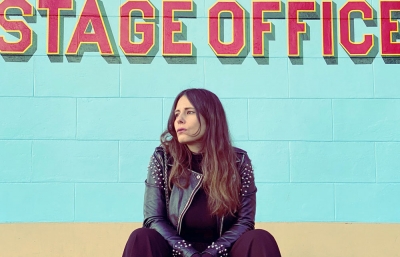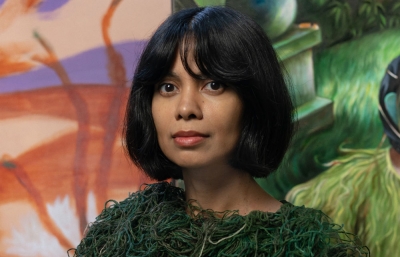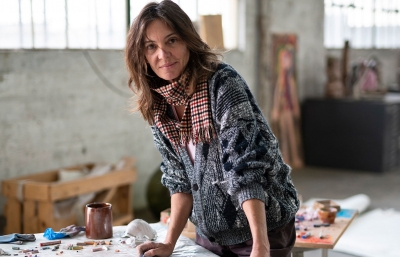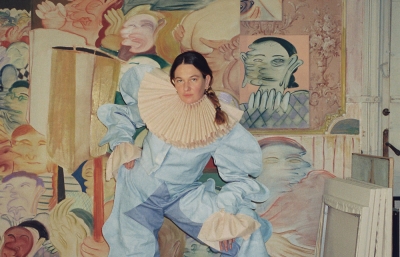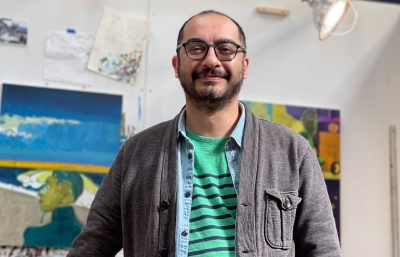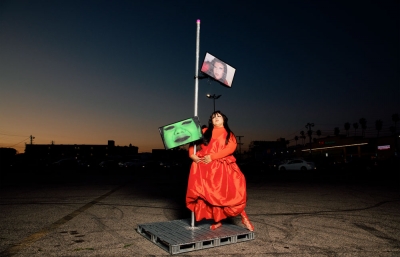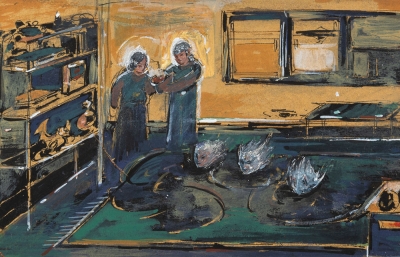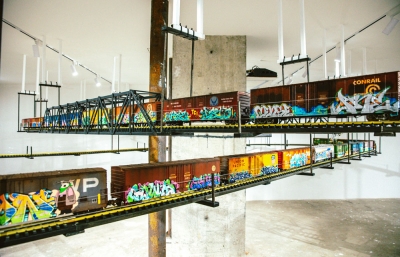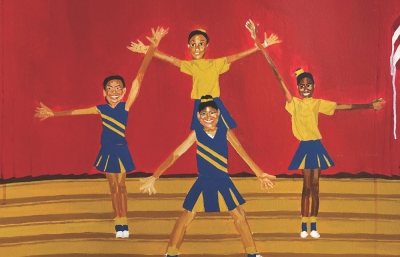A bunch of animals! There are, of course, characteristics that differentiate we humans from the rest of the animal kingdom. One is that we can self-reflect, another is our cognitive ability to act rationally. Darwin believed that, although we are closely related to animals, we are only slightly more intelligent as a result of our lucky evolution. Perhaps we should spend more time considering our capacity for abstract thought and contemplating the stuff beyond what we can make sense of.
With a carnal instinct, LA-based artist Luke Chueh creates work that stimulates our most primal constructs. His paintings favor compositions that are simple and direct, and usually feature a solitary anthropomorphic figure stuck in a self-reflective stupor within a frozen monochromatic void. A first look at one of his images evokes the warm and fuzzy, the stuffed teddy bear you cuddled as a child. But then a glimmer of despair emanates from the inertia, revealing something troubling within the tableau.
Chueh’s work over the past decade has become widely popular and extensively imitated. His distinct style sets his work apart from the output by others of similar ilk. The prolific artist boasts a singular brand, having branched out as a forerunner in the collectible toy scene, with plans in the works to venture into the fields of merchandise, apparel and animation. I was lucky enough to have the opportunity to sit down with Luke and chew over the roots of his dark corner of the universe.
Read this feature and more in the March 2017 issue of Juxtapoz Magazine.
Gregg Gibbs: Let’s start with your background. How did you end up doing what you do?
Luke Chueh: I am Chinese-American—both of my parents were born in China, so I’m the first generation of my family born in this country. I like to think that much of my artwork touches on being ethnically Asian and relates to my experience growing up in the United States. Basically, I’ve been drawing all my life. My first memory of drawing was at four years old when my Mom showed me how to draw Mickey Mouse. After that, I became obsessed with painting and drawing the things I loved, like Star Wars, space battles and the science fiction stuff that I was watching all the time. When I graduated from high school and went to college, the reality of making a living as an artist seemed highly unlikely. People were bandying around the word “starving” in relation to being an artist— it just didn’t seem like a good idea. There are so many students who try to be artists, yet so few succeed. So I decided to channel my creative interests into graphic design by enrolling at Cal State San Luis Obispo because they had a great design program. When I was getting ready to graduate, one of my professors pulled me aside and said, “Luke, you are a mediocre graphic designer, but you’re a great illustrator and you should pursue a career in that.“

That seems like a backhanded compliment. Did you take his advice? What did you end up doing after college?
I got hired by the Ernie Ball Company, which produces guitar strings. Literally right before I graduated, I started working for them and did a bunch of T-shirts and advertisements that got some notice. I kind of quieted the attention I was getting with a lot of partying, drinking and drugs. As time went on, I developed a serious relationship with painkillers, which got me spiraling out of control. I lost my job with the company and retreated by moving to Los Angeles where I tried to get my life back in order. Some friends introduced me to an art collective called Cannibal Flower, which put on underground, one-night-only art shows, with the idea being that people only come out for opening nights.
I started honing my voice as a painter in those shows by exhibiting regularly and creating a body of work that led to an online portfolio. I believe it was through my online presence that I started getting global attention. I got lucky because a lot of kids started using my images as avatars for social media, so my work got spread around and distributed that way.
One of your most recognizable characters is a white bear-like creature, who may or may not be someone in a costume. Tell me about the evolution and meaning behind that character.
Most of my work, in one form or another, is autobiographical. When I was trying to put together my voice, I was looking at a lot of work by artists like Takashi Murakami and Yoshitomo Nara. I was interested in the fact that they had mascots they built their worlds around, and I wanted to do something like that. So I created what is essentially, for lack of a better word, this “bear” character. In all honesty, it’s not supposed to be a bear. It’s supposed to be this character that people can empathize with. I mix it up with a rabbit-style character, a monkey character, and chickens, but more often than not, I’m using the bear. Part of me recognizes that the viewer thinks it’s a bear, but to me, it really looks nothing like an actual bear.
I was in no way accomplished enough to paint like some of my favorite LA artists like Robert Williams, Mark Ryden or Todd Schorr. I found it easier to work with anthropomorphized characters that could be my mascots. So I did a lot of research at first when I was trying to come up with a design. I began orbiting around Hello Kitty. The reason why is because, for over 40 years, that character has not changed at all. Mickey Mouse has evolved, other comic characters have changed, but Hello Kitty has stayed the same. She’s only a silhouette with two eyes and a nose. I wanted to create a character that had longevity through simplicity. Also, I guess I have a bearish appeal about my personality.

Is the design of your character based, in part, on your Asian heritage and the folklore about animals that are embedded in the culture?
I think there is some kind of potential Asian connectivity between my character and ethnicity by using anthropomorphic creatures as a means to convey the human condition, which, by using humans, you cannot. Using humans creates the possibility of recognizing things like racism, sexism and ageism, that come with that identity. Anthropomorphic characters have the ability to communicate universally. A lot of my work deals with more of the sadder and depressing issues that have plagued my life.
So the animal is you, and essentially you are painting self-portraits relating to your experiences?
I definitely think that all my paintings are self-portraits. The reason I focus on self-portraiture is because I can illustrate what I know. I think I’ve had an interesting life, but I don’t necessarily paint my specific experiences. It’s more about universal themes, like trying to reach a goal and failing, loneliness... hating yourself. These are things that we all potentially feel at some point in our life. Those feelings can consume a person, just like I’ve been consumed by them. I try to share these thoughts through my characters onto the canvas. To my benefit, it seems like a lot of people relate to the work, which encourages me to go deeper by confronting the things I struggle with.
Do you rely on your work as a painter to be a therapeutic exercise?
Art being therapy is something I can understand, but I rarely find myself painting when I’m in the throes of depressive moments. I’m usually too consumed by my own misery to be inspired to work, but once I have a moment to reflect on it... that’s when the ideas come.
Kurt Cobain sang that line about how he missed “the comfort in being sad.” Are you comfortable with your anxiety and, perhaps, find it inspiring at times?
Is sadness comfortable? I think it can be. This brings up something that a professor of mine once told me, back in the day—he said I am afraid of success. At first I thought it was unfathomable—how could somebody fear success? On second thought, it makes sense, because I think it’s tied into the fear of change. If the thing you’ve known best is your own misery, it’s easy to find a comfortable place within that.
What is the meaning behind the term you coined, “cute vs. brute?” Are they two sides of the same coin?
It’s a combination of words I devised when I was coming up with a way to describe my work. I believe that art is most interesting when it studies contrast: black vs. white, dark vs. light... so, cute vs. brute. I create these approachable cartoon characters and insert them into very human narratives, so the contrast, to me, makes for a more compelling piece of art.

There is always a dark undercurrent going on. Is the idea that the original impression becomes altered and the contrast brings complexity to the meaning?
I don’t know that the people who view my work are drawn in by the cuteness, but they are more taken aback by a darker narrative. I actually think that if I had to weigh the scales, the darker stuff heavily outweighs the cute stuff. I’m not trying to create this deceptive environment. I think that by employing these characters, the audience is more easily invited into the painting. One of the themes I like to play with is “innocence lost.” In the beginning, when I started to use these bears and rabbits, I chose to make them white. The whiteness suggests innocence, whereas a darker character signifies the loss thereof.
Marcel Duchamp claimed that the most difficult part of a painting is the background, so he eliminated it. Your scenes seem to always float in a specific deep color, giving the viewer a sense of a profound emptiness. How do you determine which colors to use to dominate the picture?
When I started honing my voice, I developed this system I refer to as “the colors of doom.” So I assign different colors based on the narrative. For instance, red is violence and bloodlust, green implied pestilence, like greed for money, blue is sadness and calmness, orange is associated with madness. Yellow and purple are the wild cards—they can imply several different things depending on the specific narrative. One of the reasons I came up with these sterile or empty scenes is because I didn’t have the skill to paint in a way that could fill an entire canvas at the time. Since I’ve been drawing a lot and painting a lot, my backgrounds have evolved. Another reason my paintings have so much negative space is because I’m a lonely guy and I don’t have the best social skills. I think it also comes from living in Los Angeles, a lonely big city. Because I work all the time, I spend most of the day alone in my studio, so I’m used to spending a lot of time by myself. When I go out to art openings, sometimes it takes me about 10 or 15 minutes to become acclimated to the environment. I feel socially uncomfortable when I’m surrounded by a lot of people, and maybe my work reflects that aspect of my life.
I think a lot of artists deal with that same adjustment from working intensely in the confines of the workplace, then switching gears to interact with a crowd of people.
Yes, it’s that feeling of discomfort when you’ve spent an entire week holed up in the studio and then you go out and are surrounded by people. It takes a little while for me to get warmed up because I don’t drink. I suffer from what I fondly refer to as “Asian drinking syndrome,” which is that my body doesn’t produce a certain enzyme that helps break alcohol down in an efficient way. I also have a history of drug abuse and addiction.
How did overcoming substance abuse affect your work? Are your demons what fuel the fire of your expression?
I like to think it’s always changing. When I was in the depths of my addiction, I had a really expensive drug habit. It cost me a lot of money, and I found myself in the position of having to play it safe. You can see in my work, up until 2010 when I became sober, that it stuck to a similar narrative with my characters. I was playing it safe. I kept to a narrow narrative with the tight arsenal of characters that I used. I rarely experimented because I needed to make enough money in order to maintain my habit. Ironically, at the time, my images were becoming more and more bloody, a lot more violent, a lot darker. I actually think that my personal experiences were leaking into my paintings. When I was finally able to break out of that cycle, I tried experimenting with painting more, but I’m constantly worried about the floor dropping out from under me. Since then, it’s been hard for me to let go of these characters that I’ve employed for over a decade now. I’ve been trying to let go of them, but not only is it difficult for me to psychologically release them, I feel almost tied down to them, honestly frustrated. I have a love/hate relationship with my characters. I don’t want to be known as “the bear guy.” I want to be more than that.
----
Originally published in the March 2017 issue of Juxtapoz Magazine, on newsstands worldwide and in our web store.

